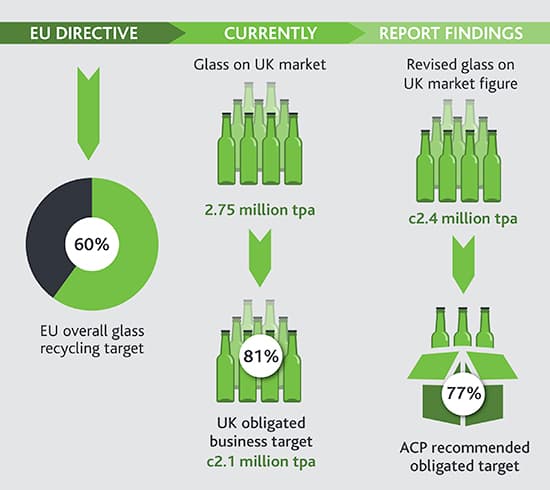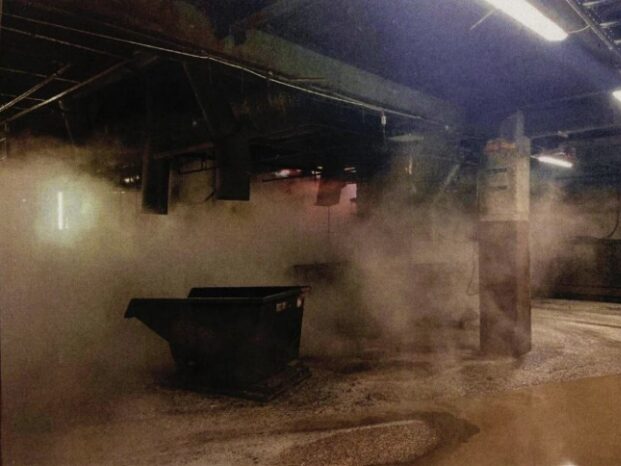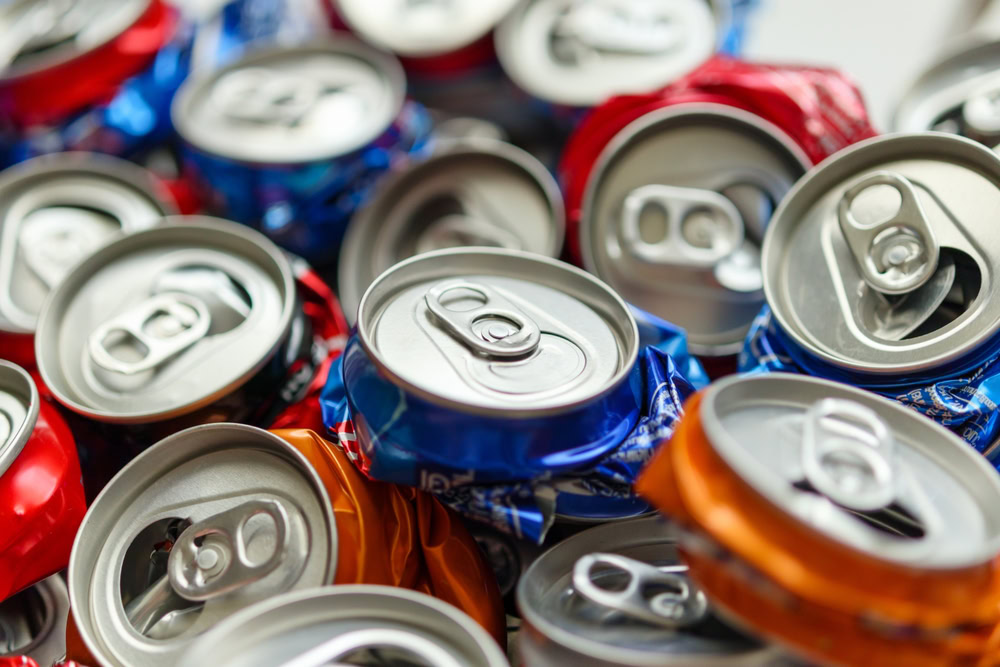Glass recyclers across the UK have questioned whether or not lowering the overall glass recycling target for obligated businesses will benefit the sector.
Defra plans to launch a consultation in the near future on whether to change the glass packaging recycling obligation of 81% of the overall tonnage on the UK market.

The consultation proposal follows the publication of a glass industry report last week, which found that the amount of glass on the UK market had been overestimated by around 350,000 tonnes per year (see letsrecycle.com story).
Currently, the glass recycling industrys target is to recycle 81% of c.2 million tonnes of glass per year, but last weeks report suggested the amount of glass on the market was closer to 2.4 million tonnes per year, rather than the 2.75 million tonnes per year on which the 81% target is based.
As such, the Advisory Committee on Packaging (ACP) suggested that the total UK business and local authority collection glass recycling rate in 2012 would have been around 68%, thereby comfortably meeting the EU glass recycling target of 60%.
Consequently, the Advisory Committee on Packaging (ACP) called on Defra to base obligation targets on the reports estimate of 2.4 million tonnes per year and also to reduce the obligated percentage from 81% to 77%.
Speaking to letsrecycle.com, one glass recycler in England said reducing the obligation would be a positive move and help bring down the price of glass PRNs to a more reasonable level.
He said: I feel a lower PRN next year is good for the industry. When it is too high it hurts the industry so it should address those issues. But Im very surprised by the difference in overall tonnage estimates [c.350,000 tonnes per year].
He also voiced concerns about the length of time it might take for Defra to make changes if it decided current glass tonnages are indeed overestimated, as in the mean time you could get fined for not reaching compliance on inaccurate data.
‘What is the point of having a PRN if they reduce the targets? Either you put a target there that is a challenge for you, or you dont have one.’
Tim Gent, director, Recresco
Recresco
But, Tim Gent, director of glass recycling firm Recresco, told letsrecycle.com that reducing the 81% obligation as well as the overall estimated tonnage would be absolutely ridiculous because a target is something you aim for not something you met last year.
He said: I would say we have complied with European legislation but I dont see why it should then follow on that we should reduce the obligated tonnage, because we are meeting those targets. If you werent achieving them, then yes. But all you are doing is to crash the value of the PRN to zero it wont just drop a few pounds.
What is the point of having a PRN if they reduce the targets? Either you put a target there that is a challenge for you, or you dont have one.
But, Mr Gent suggested that the obligation could be lowered to 77% if within this the target for glass recycled via remelt was increased to 75%.
Currently, 63% of recycled glass must be processed through remelt applications, with the remaining 37% sent to aggregate.
Mr Gent said: If you increase the remelt target and then decrease the overall target I could see the benefit there. All of the value would then move to the remelt PRN, and we need to be recycling more glass through remelt.
Elsewhere, another UK glass recycler agreed that a drop in glass PRN prices would not be good for the industry and said the obligated targets should remain the same.

He told letsrecycle.com: The overall tonnage on the market should be revised and lowered, but the obligated target should stay at 81% and still have the same percentage split for aggregate and remelt.
You certainly dont want to reduce it. You want to keep that percentage high and recover as much glass as possible, because if the PRN price goes down too low there is no point in having it. PRNs might be cheaper but you might have to pay for glass.
Viridor
Meanwhile, national organics and recycling manager at Viridor, Bill Griffiths, said the glass industry had benefitted from higher PRN values as it had enabled investment in the sector to drive up the quality of material.
Also speaking to letsrecycle.com about the ACPs recommendations, he said: It is a difficult one isn’t it? Has the figure been genuinely overestimated? I don’t know, but obviously at the moment we are benefitting from higher PRN values, which have enabled us to invest in moving from aggregate to remelt.
He also raised concerns about the potential drop in glass PRN prices if Defra were to move the goalposts by changing the glass obligation target.
Mr Griffiths added: Suddenly we don’t have that value because if the target comes down the value of the PRN will go through the floor and then there’s no money to invest in processing and moving from aggregate to remelt. So how’s that money going to be generated?
It’s an important part of the mix. If that money goes, there will still be the desire to move to remelt, but how do we invest in the technology?
Packaging figures
Furthermore, in the wake of third quarter packaging figures released this week which suggest that compliance is now achievable across the UK for glass there is expected to be a shortfall in the amount of aggregate glass available at the end of the year, with aggregate buyers likely to have to purchase PRNs at the higher remelt price (see letsrecycle.com story).
Commenting on the figures, Recrescos Tim Gent said PRN prices were steady enough to not cause a collapse adding that despite the shortfall in aggregates I think we will meet the target it is a challenge but that is the point.






Subscribe for free